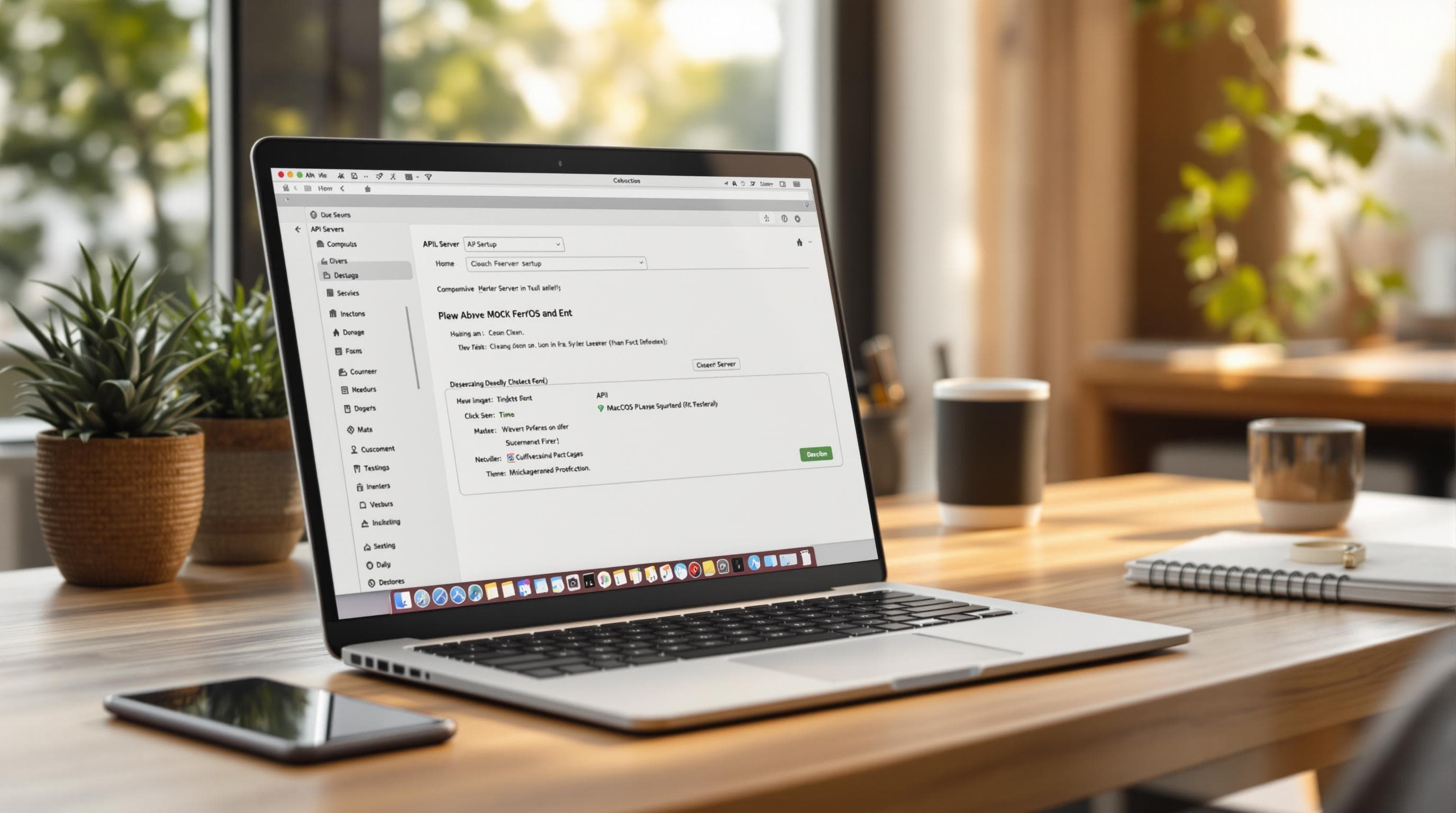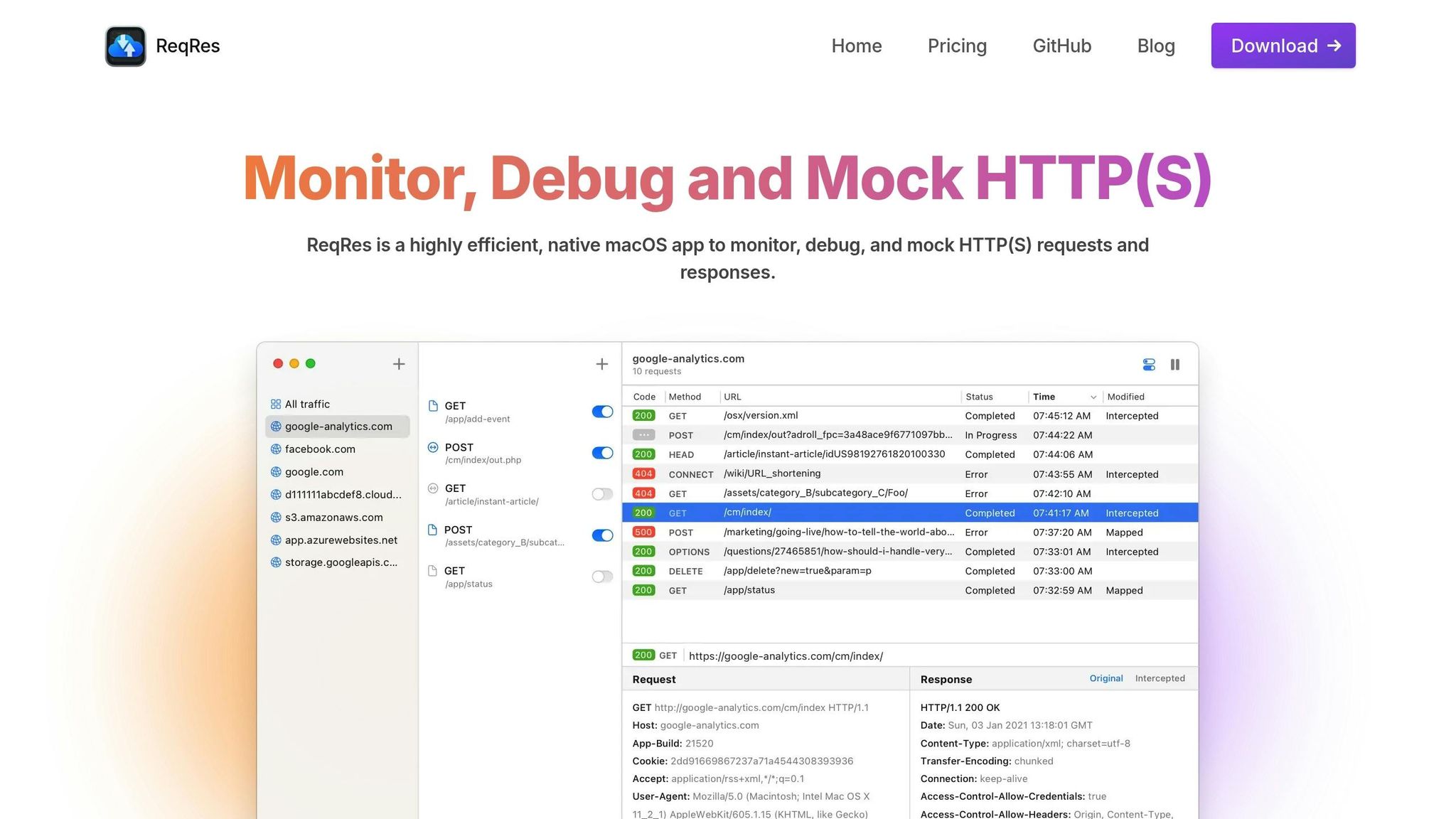
How to Set Up a Mock Server on macOS
Mock servers let you simulate API endpoints locally, making development and testing easier without relying on live servers. This guide shows you how to set up a mock server on macOS using ReqRes, a tool for monitoring HTTP(S) traffic and creating mock endpoints.
Key Takeaways:
-
Why Use Mock Servers?
- Work offline, test edge cases, and debug efficiently.
-
What You Need:
- macOS 10.14 Mojave or newer
- ReqRes app for HTTP(S) monitoring and mocking
-
How to Set Up:
- Install ReqRes, trust its root certificate, and configure mock endpoints with custom responses.
Mock servers provide a stable environment for API testing and debugging, saving time and effort during development.
Setup Requirements
Make sure your macOS version is compatible and have ReqRes installed. These steps are essential for setting up the mock server without any issues.
macOS Compatibility
- macOS 10.14 Mojave or newer
Required Software
- ReqRes - a tool for monitoring and debugging HTTP(S) traffic on macOS
Important Installation Details
ReqRes works by intercepting HTTP(S) traffic through a local proxy. To capture HTTPS traffic, you'll need to grant permission and trust its root certificate during the setup process.
Once that's done, proceed to download and install ReqRes.
ReqRes Setup Guide

Get started with ReqRes to mock and test HTTP(S) traffic on your system.
Download and Install
Head to reqresapp.com, choose a license, and complete the purchase process.
-
Download the
.dmgfile from your ReqRes account. - Open the file and drag the ReqRes app into your Applications folder.
- Launch ReqRes and approve any macOS security prompts.
You'll also need to trust ReqRes's root certificate (set up earlier) to monitor HTTPS traffic.
ReqRes Interface Overview
ReqRes offers several key features to streamline your testing:
- Traffic Monitor: Captures HTTP(S) traffic in real-time.
- Request Details: Displays headers, parameters, and body content.
- Endpoint Mocking: Lets you create custom responses.
- Map Local: Links payloads to local files for testing.
Mock Server Configuration
Set up mock servers by defining URL patterns, methods, status codes, headers, and response bodies. Use the Map Local feature to attach specific files for versioned payloads. Enable interception to log all HTTP(S) traffic in plain text.
Testing Your Mock Server
Sending Test Requests
Once your mock endpoints are set up, you can send test requests to them through ReqRes. This tool lets you view headers and bodies in real time, offering a clear look at both requests and responses. ReqRes works as a middle layer, logging all HTTP(S) traffic for full transparency into the communication flow. You can also use the Map Local feature to simulate various response scenarios.
Testing API Responses
With Map Local, you can serve local files as mock responses. This makes it easy to test different scenarios and edge cases quickly and efficiently.
Tips and Problem Solving
Common Issues and Fixes
When testing your mock server, you might run into a few hiccups. Here's how to address two of the most frequent problems:
-
Request Interception Issues
Make sure ReqRes is set up correctly as a man-in-the-middle proxy. -
Response Matching Problems
Review your mock rules and ensure the URL and method match exactly. Small mismatches can cause big headaches.
Conclusion
You're ready to dive in - here’s a quick summary and what to do next:
ReqRes on macOS provides local mock endpoints and real-time HTTP(S) monitoring, making API testing and debugging faster and more reliable.
From here, you can use Map Local to deliver file-based responses for quick prototyping, enable man-in-the-middle SSL inspection for advanced troubleshooting, and keep ReqRes updated to enjoy the newest features.